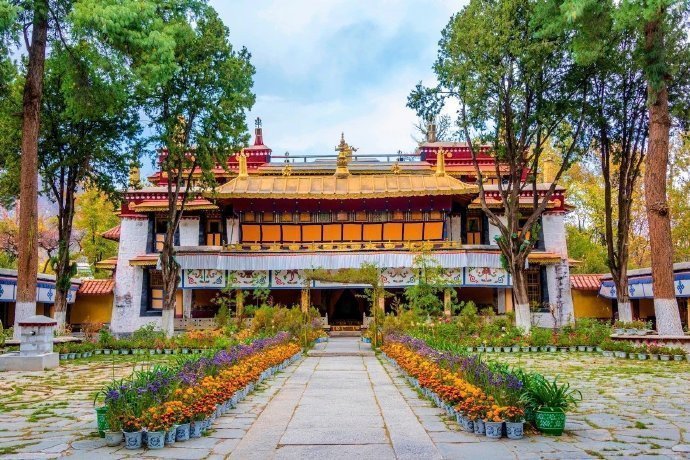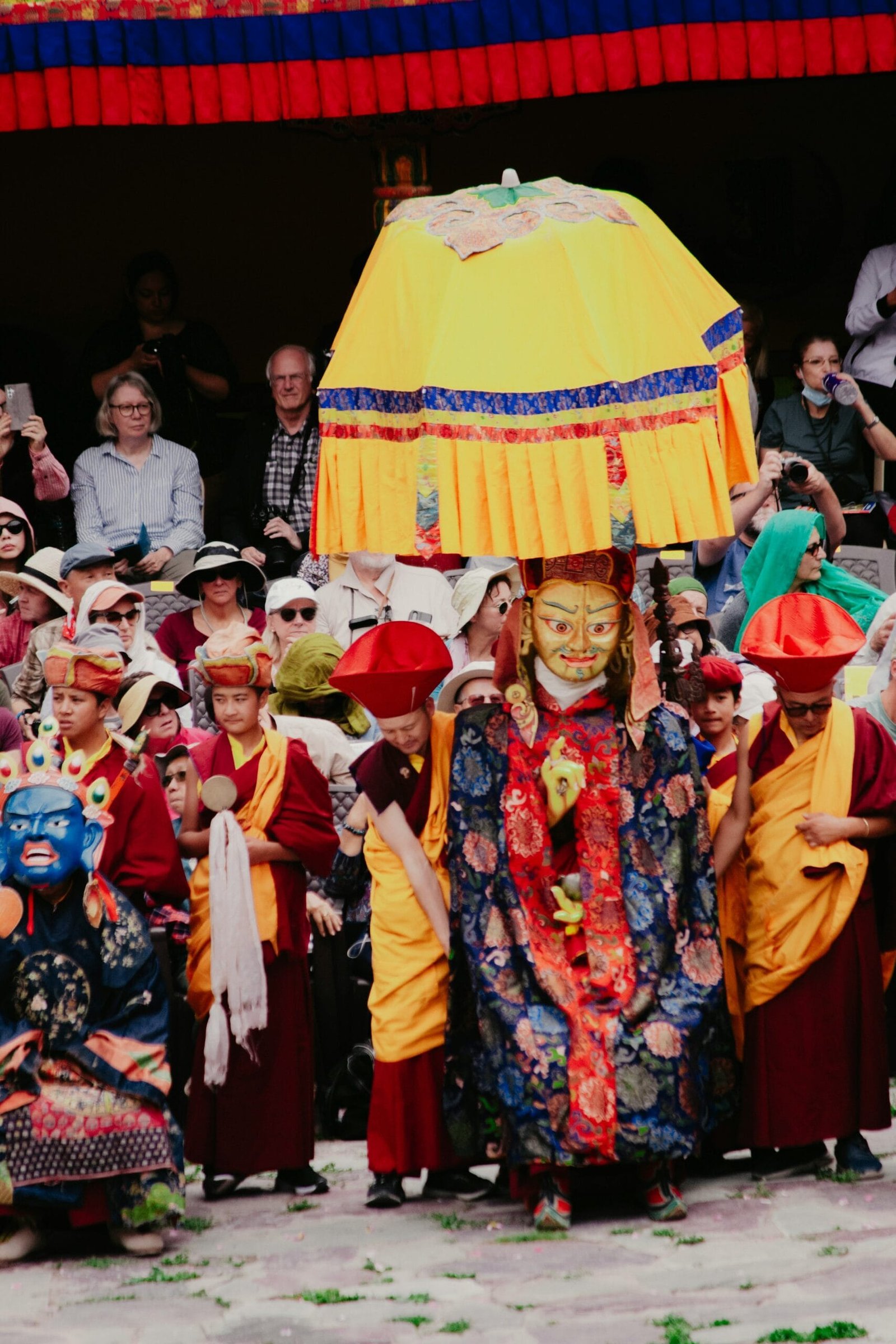Introduction to Tibetan Monasteries and Buddhism
Tibetan monasteries serve as pivotal institutions within the framework of Tibetan Buddhism, a spiritual practice that intertwines beliefs, rituals, and communal life. These monasteries, often set against stunning mountain landscapes, are more than mere architectural marvels; they are sacred spaces where the teachings of the Buddha are preserved, practiced, and transmitted across generations. The significance of these religious sites cannot be overstated, as they function as vital centers for spiritual guidance, education, and community cohesion, playing a crucial role in the lives of Tibetan people.
Historically, Tibetan Buddhism emerged in the 7th century and quickly became a dominant spiritual force in the region. Monasteries were established as places for monks to live, study, and meditate, fostering an environment for deep spiritual development. Each monastery houses various elements such as temples, living quarters for monks, and areas for communal activities, reflecting the holistic approach that Tibetan Buddhism adopts towards spirituality. This architecture mirrors the teachings of Buddhism itself, emphasizing harmony with the environment and community.
Within the confines of these monasteries, a rich tapestry of rituals and practices begins to unfold. Monks engage in daily prayers, meditation sessions, and scholarly pursuits, ensuring that the essence of Buddhist philosophy thrives. The physical layout of the monasteries, from their stupas to prayer halls, is meticulously designed to evoke a sense of connection with the spiritual realm, embodying the teachings of compassion, wisdom, and enlightenment. Through imagery, colors, and symbolic motifs, these structures narrate the profound values of Buddhism, accommodating both solemn contemplation and vibrant community life.
In exploring the intricate architecture of Tibetan monasteries, one gains insight into the profound symbolism that shapes Tibetan Buddhism. This interplay between physical space and spiritual essence reflects a dynamic and living tradition that continues to resonate today.
Fundamental Buddhist Symbols in Monastery Architecture
Tibetan monasteries are rich tapestries of spiritual symbolism, providing a profound glimpse into Buddhist philosophy and aesthetics. A central emblem in this architectural language is the lotus flower, universally recognized as a symbol of purity and enlightenment. It signifies the ability to rise above worldly attachments and attain spiritual awakening. In the serene context of a monastery, the lotus is often represented in intricate carvings or murals, emphasizing the harmonious blend of nature and spirituality that pervades Tibetan culture.
Another pivotal icon in monastery architecture is the Dharma wheel, or Dharmachakra, which embodies the teachings of the Buddha and the path to enlightenment. Characterized by its eight spokes, the wheel represents the Noble Eightfold Path, guiding practitioners towards moral and ethical living. This symbol can be found prominently integrated in various forms, from wall decorations to elaborate gateways, serving not only as a visual focal point but also as a reminder of the core principles of Buddhism to all who enter.
The stupa is another enduring symbol within Tibetan monasteries, serving as a tangible representation of the Buddha’s enlightenment. Traditionally, stupas are constructed in a dome shape and contain relics, which are venerated by practitioners. Functioning as a meditation aid, the stupa encapsulates the essence of impermanence and the cyclical nature of life, reminding visitors of the transient beauty of existence. These sacred structures are strategically placed within monastery grounds, enhancing the spiritual atmosphere and providing areas for contemplation.
The incorporation of these symbols is intentional and multifaceted, contributing not only to the aesthetic allure of Tibetan monasteries but also to their role as centers of spiritual practice. Each element reflects the deep philosophical underpinnings of Buddhism, inviting both devotees and visitors to engage with these profound teachings on a contemplative level. Such symbols foster a palpable sense of peace and enlightenment, inviting everyone into the rich spiritual realm of Tibetan Buddhism.
Architectural Elements Reflecting Buddhist Beliefs
Tibetan monasteries serve not only as places of worship but also as intricate representations of Buddhist beliefs through their architectural elements. One of the most prominent features is the prayer hall, known as the ‘gtsug lag khang’. This structure is often a large, central area where monks gather to perform rituals and recite prayers. The layout is meticulously designed to facilitate movement and participation, allowing congregants to walk clockwise—a practice that reflects the Buddhist principle of harmony and respect for the sacred.
Another key component is the stupa, a hemispherical structure that symbolizes the enlightened mind of Buddha. The stupa is often adorned with intricate carvings and painted images that convey profound spiritual narratives. The orientation of stupas typically faces the cardinal directions, which enhances their spiritual significance and aligns them with universal forces central to Buddhist cosmology. Such placements emphasize the belief in the interconnectedness of all things, a core tenet of Buddhism.
Additionally, sacred statues of Buddha and other enlightened beings play a crucial role in the architectural landscape of Tibetan monasteries. These statues are not merely ornamental but are meticulously crafted to embody the qualities of the deities they represent. Materials chosen for construction, such as stones, wood, and metal, are often selected for their symbolic meanings and spiritual significance. For example, gold is commonly used in statues to represent enlightenment and purity.
The overall layout of the monastery also resonates with Buddhist teachings, often designed to create a sense of calm and contemplation. Pathways, gardens, and meditation halls facilitate an environment conducive to spiritual practice. Each element, from the orientation of structures to the selection of materials, reinforces the monastic commitment to embodying Buddhist principles in daily life. This holistic approach to architecture not only enhances the aesthetic value of Tibetan monasteries but also deepens their spiritual meaning, illustrating the profound connection between belief and design.
Cultural Significance of Symbolism in Tibetan Society
The cultural landscape of Tibetan society is deeply enriched by the intricate tapestry of Buddhist symbolism that permeates various aspects of life. At the heart of this cultural significance is the architecture of Tibetan monasteries, which serves as a physical manifestation of spiritual ideals. The design elements and motifs found on these structures not only provide an aesthetic appeal but also embody profound philosophical principles that guide the daily lives of the Tibetan people.
Symbols such as the lotus flower, representing purity and enlightenment, and the endless knot, signifying interconnectedness, resonate deeply within the cultural psyche. These icons serve as reminders of the teachings of Buddhism and maintain a constant spiritual presence in the social fabric. As such, they influence art, as seen in traditional thangka paintings and sculptures that depict various deities and aspects of the Dharma. These artworks are not merely decorative; they are vital tools for meditation and reflection, intended to facilitate spiritual growth among practitioners.
Moreover, the significance of these symbols extends beyond artistic expression into the realm of daily rituals and community practices. Various ceremonies, from births to funerals, often incorporate specific symbols that align with Buddhist tenets, reinforcing the interconnectedness of the community and spirituality. This harmonious blend of everyday life and spiritual practice illustrates the integral role that Buddhist symbolism plays in shaping not only personal beliefs but also collective identity within Tibetan society.
In modern times, as globalization influences cultural exchanges, the enduring legacy of these symbols remains evident. While contemporary forms may adapt to changing circumstances, the core meanings persist, demonstrating the resilient nature of Tibetan culture. Thus, the spiritual architecture of Tibetan monasteries and the rich symbolism embedded within serve to illuminate the profound relationship between spirituality and daily existence, fostering a vibrant, cohesive community.






